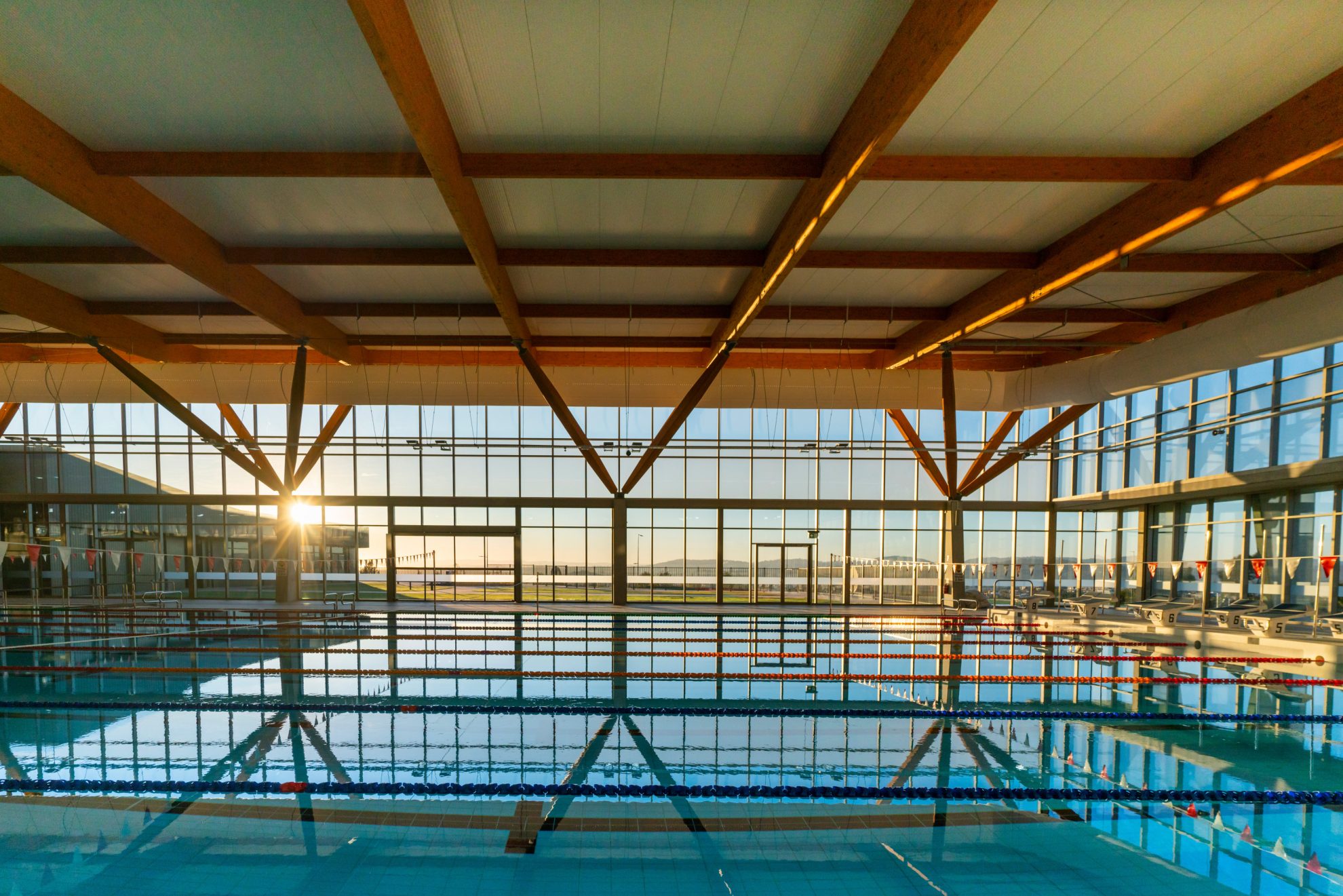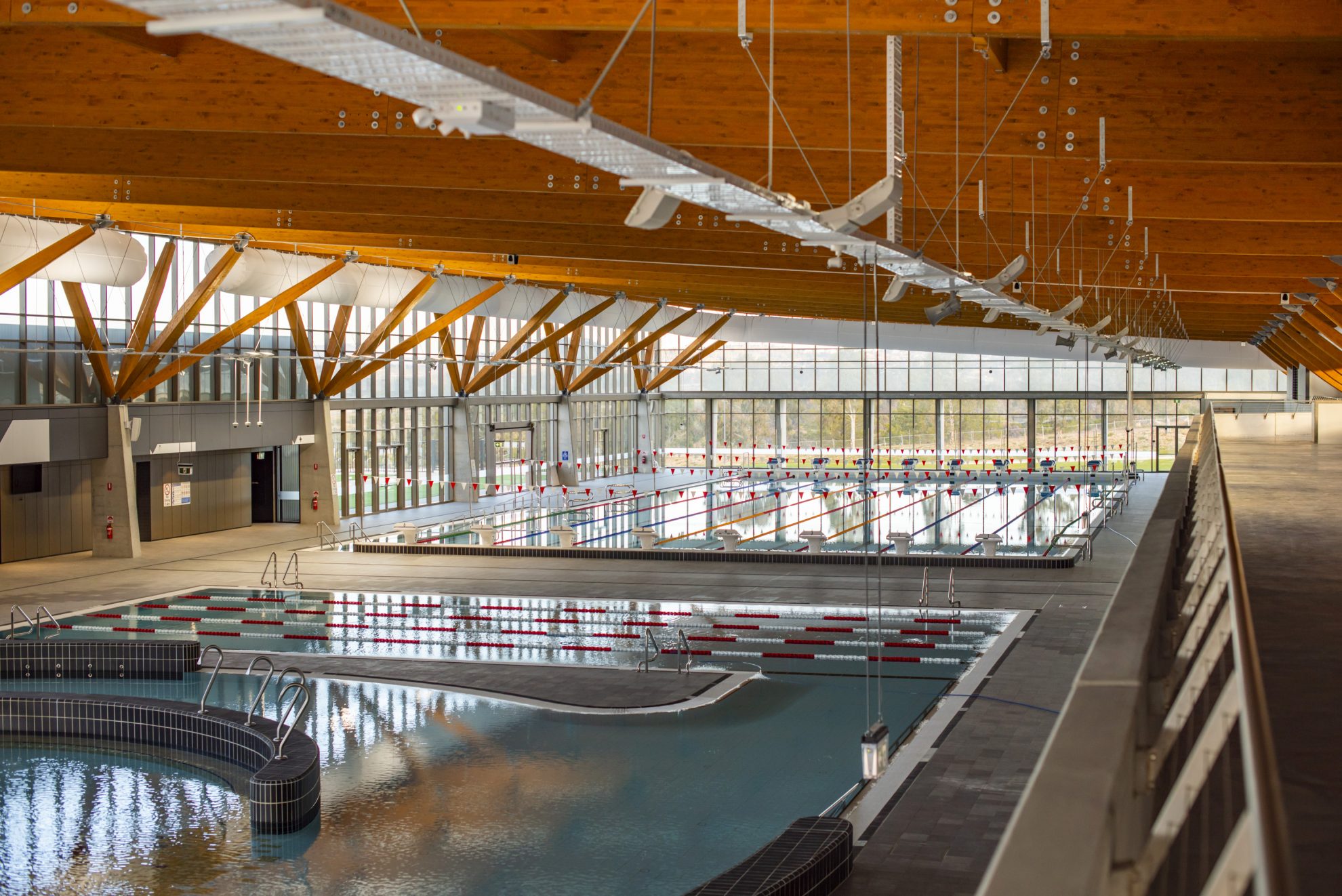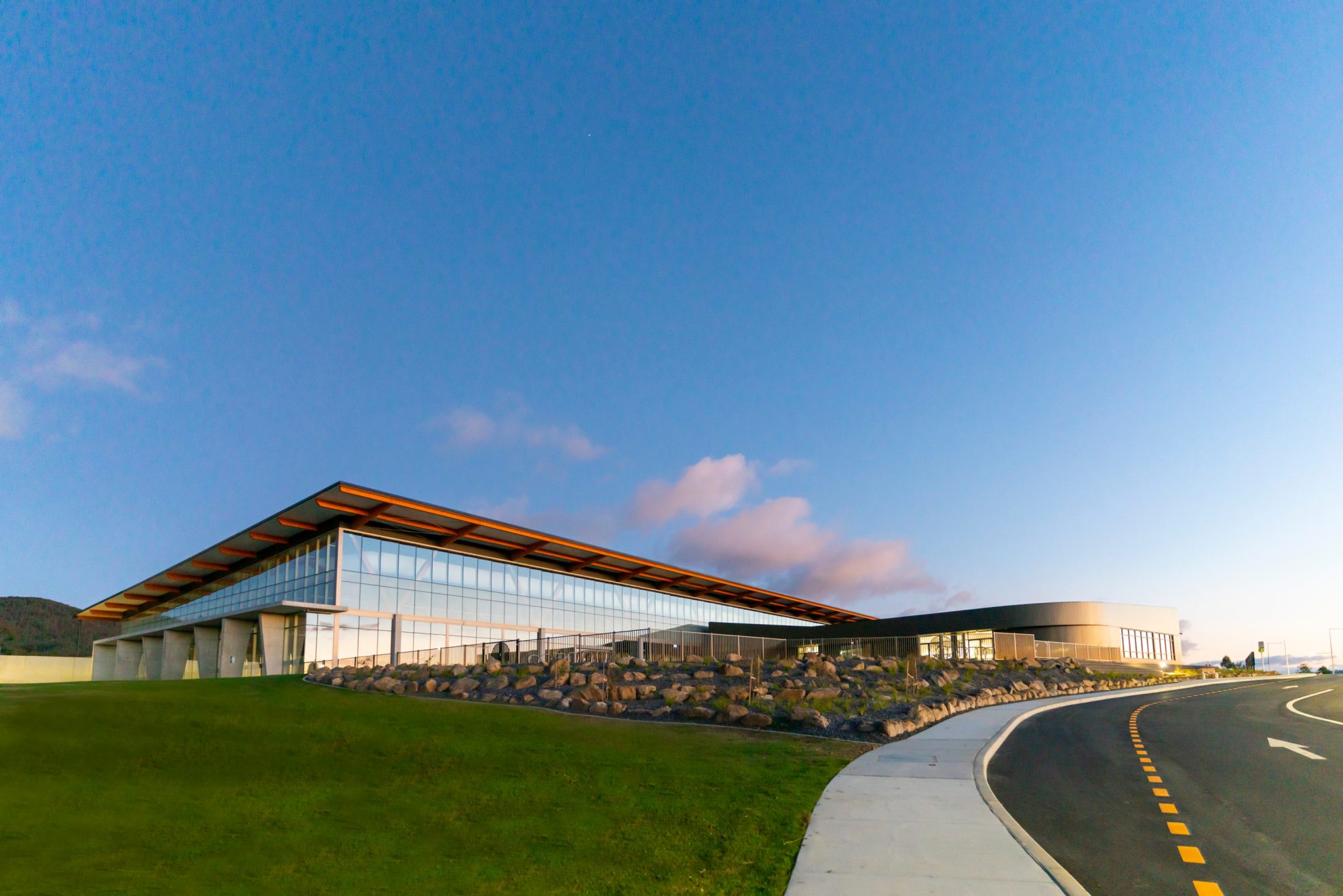Stromlo Leisure Centre’s Integrated Approach with Timber

Sustainability in the built environment is no longer optional—it is essential. Buildings and construction account for nearly 39% of global carbon emissions, making material choices and design strategies critical in reducing environmental impact. COX is committed to leading this shift, pushing the boundaries of sustainable design. Stromlo Leisure Centre (SLC) is a prime example, demonstrating how engineered timber can replace traditional materials to reduce embodied carbon while enhancing user experience.
COX Director, Ian Smith
The beauty of selecting timber for the SLC roof structure was that it significantly reduced embodied carbon, but also avoided embedding steel within a corrosive environment with all the durability and maintenance issues that would have come with. The timber solution is both sustainable and enduring.

Nestled within Stromlo Forest Park, SLC was commissioned by the ACT Government to serve the growing Molonglo community. The facility expands the park’s offerings with a 50-metre lap and competition pool, learn-to-swim pool, water play areas, a gym, fitness studio, café, crèche, and retail space.
A key focus of the project was sustainability through material selection and structural innovation. At its heart is the southern-hemisphere’s longest-spanning glulam timber structure—a deliberate choice that significantly reduces embodied carbon compared to steel and concrete while creating a warm, welcoming environment. The design takes inspiration from the surrounding bushland, with glulam beams, struts, and purlins forming a structural system reminiscent of tree branches. The tapered profiles enhance openness and light, creating a seamless connection to the outdoors.
Beyond aesthetics and structure, timber offers exceptional sustainability benefits. The 250 cubic metres of timber used in the project took just 10 minutes to regrow. Its durability and resistance to corrosive damp chlorine environments make it ideal for aquatic centres, reducing maintenance costs and improving long-term performance. Timber’s natural thermal properties also contribute to energy efficiency, helping regulate internal temperatures and reducing reliance on mechanical climate control.
COX Head of Sustainability, Dr Matthias Irger
Timber plays a pivotal role in our journey to a carbon neutral and circular economy. The SLC demonstrates that in addition to its environmental and structural performance, the speed of construction, durability, maintenance and end-of-life considerations make timber an economically compelling alternative to concrete and steel.

A lifecycle assessment of SLC confirmed the environmental benefits of its timber roof frame, which resulted in 1,061 tonnes of carbon dioxide equivalent (tCO₂e) saved—an overall 16.5% reduction in carbon emissions compared to a steel frame. In addition, the use of the timber structural frame sequesters a further 296 tCO2e. While concrete remained essential for the foundation and slab, timber significantly lowered the project’s lifecycle carbon impact. The assessment also identified opportunities to enhance circularity, supporting a shift toward more sustainable material use and end-of-life recovery.
SLC sets a benchmark for sustainable sports infrastructure, proving that large-scale leisure projects can balance functionality, aesthetics, and environmental responsibility. As COX works towards achieving net-zero operational carbon and a 50% reduction in embodied carbon across all projects by 2030—benchmarked against standard construction processes—SLC demonstrates how sustainable choices can drive long-term value while fostering stronger, resilient communities.